
JEREMY BABENDURE
Institute for Learning Innovation
Chief Science Officers: A Strategy for Student Awareness and Industry Engagement
NSF Awards: 1615209
Learn about student leadership and Chief Science Officers through the eyes and creativity of our students.
Chief Science Officers: A Strategy for Student Awareness and Industry Engagement
NSF Awards: 1615209
Learn about student leadership and Chief Science Officers through the eyes and creativity of our students.
-
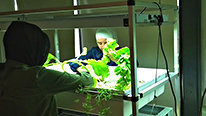 Seeding the Future with Change Makers
Seeding the Future with Change Makers
Rajeev Rupani
-
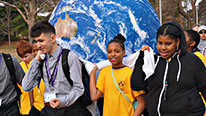 Bringing GLOBE Student Researchers Together with Symposia
Bringing GLOBE Student Researchers Together with Symposia
Jennifer Bourgeault
-
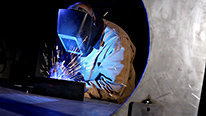 Lessons Learned from Launching High School Manufacturing App
Lessons Learned from Launching High School Manufacturing App
Matthew Fieldman
-
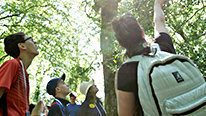 The 2018 GLOBE Learning Expedition in Ireland
The 2018 GLOBE Learning Expedition in Ireland
Jan Heiderer
-
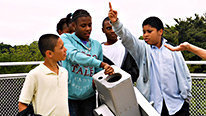 YouthAstroNet: STEM identity through authentic inquiry
YouthAstroNet: STEM identity through authentic inquiry
Mary Dussault
-
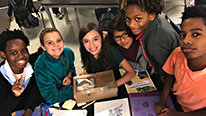 Career Connections: Bridging the gaps through STEM
Career Connections: Bridging the gaps through STEM
Deanna Privette
11241 Views
Public Discussion
Continue the discussion of this presentation on the Multiplex. Go to Multiplex
11241 Views
presentation
has been viewed
Related videos you might be interested in...
-
 Seeding the Future with Change Makers
Seeding the Future with Change Makers
Rajeev Rupani
-
 Bringing GLOBE Student Researchers Together with Symposia
Bringing GLOBE Student Researchers Together with Symposia
Jennifer Bourgeault
-
 Lessons Learned from Launching High School Manufacturing App
Lessons Learned from Launching High School Manufacturing App
Matthew Fieldman
-
 The 2018 GLOBE Learning Expedition in Ireland
The 2018 GLOBE Learning Expedition in Ireland
Jan Heiderer
-
 YouthAstroNet: STEM identity through authentic inquiry
YouthAstroNet: STEM identity through authentic inquiry
Mary Dussault
-
 Career Connections: Bridging the gaps through STEM
Career Connections: Bridging the gaps through STEM
Deanna Privette
William Spitzer
Vice President
Thanks for sharing this interesting project! I really appreciated hearing the voices of the participants from around world, it really gave a sense of what participation in this project meant, and highlighted the diverse makeup of the group. It was great to hear about how the students felt they were able to have an impact on their community, expand their professional horizons, and explore career interests. In what other ways were you able to capture these impacts beyond the video interviews?
I was curious to learn more about the age and background of the participants, and how they were chosen. I also was intrigued to learn more about what kind of scaffolding, training or resources the project provided to help students be effective voices in their community.
Thanks,
Billy
Jeremy Babendure
Executive Director
Thanks for your comment! We hold events in the regions where the students live in order to continue to impact their communities while network with STEM professionals who are active in their communities. We also have mentors matched to schools to help students learn more about STEM and help them with their career goals and opportunities. The participants are either in middle or high school and are elected by their peers, but they submit an application each year as a part of the process. Each participant is elected for a year. To help students become effective voices in their communities, we have mentors matched with their schools, we also have advisers to help shepherd the students, and take the students on trips to network and learn more about STEM fields and careers.
William Spitzer
Vice President
Thanks Jeremy, it is great to hear about the mentoring component, that seems really important. I also think it's really interesting that participants are elected by their peers, and have to be reelected each year. What have you found in terms of continuity of participants? Are there any links between length of participation and the impacts you see?
Jeremy Babendure
Executive Director
We have found that for those who continue to participate, which is good number of them, that their plans improve from their first year to their second year. We also see an increased dedication to the position, more recognition of and participation in leadership opportunities, and they connect more with the community in their second year. We have seen participants impact the community more as they gained more experience.
Margaret Glass
Independent consultant
I really appreciated hearing from the youth themselves about their experiences as Chief Science Officers. I also wondered about the kinds of supports and training they receive to build communication skills for these new contexts in which they find themselves.
It is also great to see the peer support that they get through collective meetings and events. Is there a way to keep these youth in contact with each other as they advance through their CSO experience? Do they form cohorts or classes of alumni to build capacity for future CSOs? I would be interested in hearing about some of the longer term expectations of this program.
Looking forward to learning more!
Margaret
Jeremy Babendure
Executive Director
I appreciate your thoughtful comment! Thanks for posting. We match mentors to their schools and through them and advisers, we hold events in the areas where these students live. Our mentors and advisers train students on communication skills, along with taking them on field trips and networking trips to connect with STEM professionals. We are building an alumni network in Arizona and hope to expand the alumni network to all our CSO regions. We expect that the alumni network will grow as the program matures and progresses!
Elysa Corin
Senior Researcher
It was great to hear from the youth about their participation in the CSO program, and why they found the program impactful. Can you provide us a little more information about the activities the youth engage in? Particularly, how are they working in their communities? Are they able to learn about any STEM area, or are focus issues pre-determined? Also, how are you envisioning impact in this project? Are you only measuring impact on the youth participants, or are you also considering impact on the communities the youth are working in? Thank you!
Jeremy Babendure
Executive Director
Many of the activities that CSO's engage in are local science fairs, networking events, field trips to places which use STEM fields as a part of their daily work activities, and help companies host local community events that highlight STEM careers. They are volunteer students and often work as CSO clubs, with help from mentors and advisers who are matched to their school. They can focus on whichever STEM area they would like to, such as robotics, engineering, or whatever it may be. Impact for our CSO project is primarily focused on the increased participation of youth participants, which will then positively impact the communities that they work or live in. But, we are driving towards the goal that CSO participants will become more involved with local businesses and other interested parties or partners, which will both increase CSO participation while benefiting the community.
Teruni Lamberg
Interesting project, nice video!
Jeremy Babendure
Executive Director
Thank you! A lot of hard work went into it and we are glad that you liked it! Please let me know if you have any questions!
Margaret Glass
Independent consultant
I am curious about the sustainability model for the CSO program. Are you seeking state or national level support from business or government partners? How will the outcomes and research from the grant position this program for the future?
Thanks!
Margaret
Jeremy Babendure
Executive Director
We are seeking both state-level and national-level partners in business and in government and we do have business and government partners in states such as Arizona, Michigan, and Oregon, as well as partners at the national level. The grant's outcomes and research will help us integrate our CSO clubs into a national ecosystem of STEM-minded participants, advisers and collaborators. It will also continue to build on our foundation of partnerships in multiple states. The program has received regional funding across the country, which is making the program sustainable. We also note that in Arizona, schools provide a small activity fee to help offset the costs of the clubs.
Further posting is closed as the showcase has ended.